Leader: Alan Rayner
Brilliant sunshine and a drumming great spotted woodpecker greeted 15 members arriving for what turned out to be a beautiful early spring walk through woods, across a meadow and beside a stream and waterfall, illuminated by intensely yellow brimstone butterflies and decorated by early spring flowers and ferns.
Feeling rusty after an over-long period of indoor existence, I was glad to be joined in my efforts to explore the highways and byways of the natural flow of life by Helena Crouch and Tom Rogers to assist with plant and bird identification.
Upon entering the woodland we were first attracted by an ash stump covered in the multi-coloured brackets of Turkeytail fungus (Trametes versicolor). Moving on, I sought to reveal something of the microcosm within the macrocosm, the small and easily overlooked, but beautifully formed amongst the larger and more obvious fauna and flora.
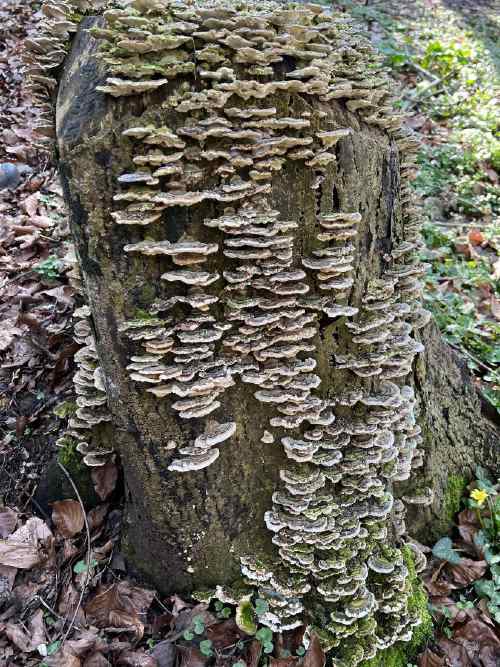
Multi-coloured brackets of Turkeytail fungus, Trametes versicolor, on an ash tree stump, macro view © David Hall
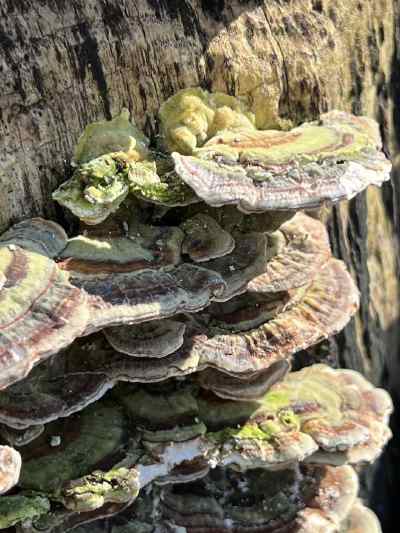
Multi-coloured brackets of Turkeytail fungus, Trametes versicolor, on an ash tree stump, micro view © David Hall
We spent some while becoming familiar with some of the mosses, liverworts, lichens and fungi adorning ground and tree trunks and branches. Amongst the mosses, Tamarisk moss (Thuidium tamariscinum), Swan’s-neck Thyme-moss (Mnium hornum) and Catherine’s moss (Atrichum undulatum) were abundant.
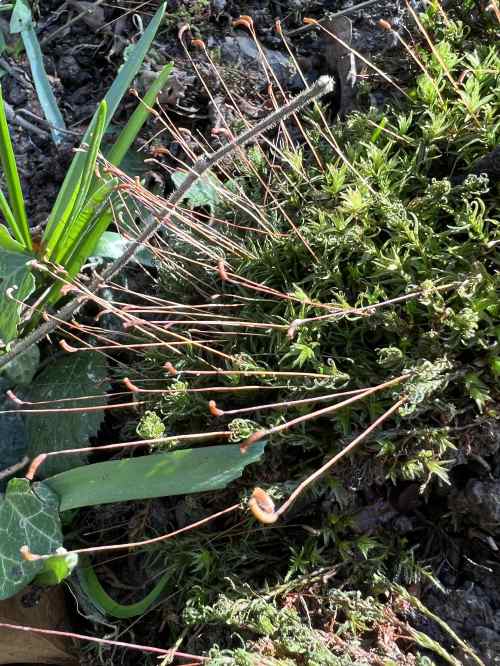
Catherine’s moss, Atrichum undulatum, with leafy gametophytes and long-stalked sporophytes with curved capsules © David Hall
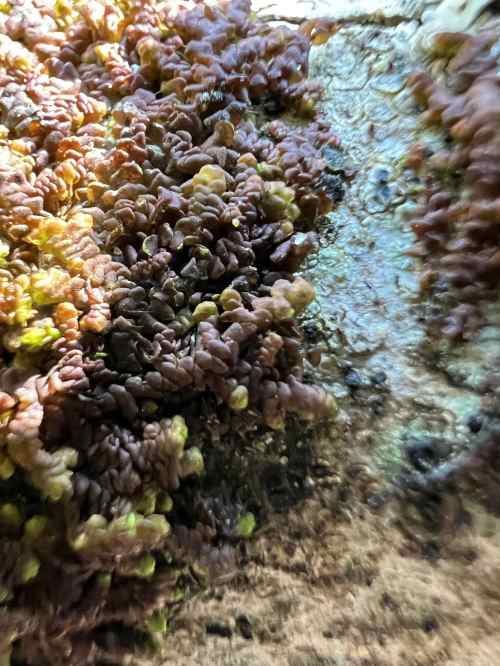
. Dilated Scalewort, Frullania dilatata, on a tree branch
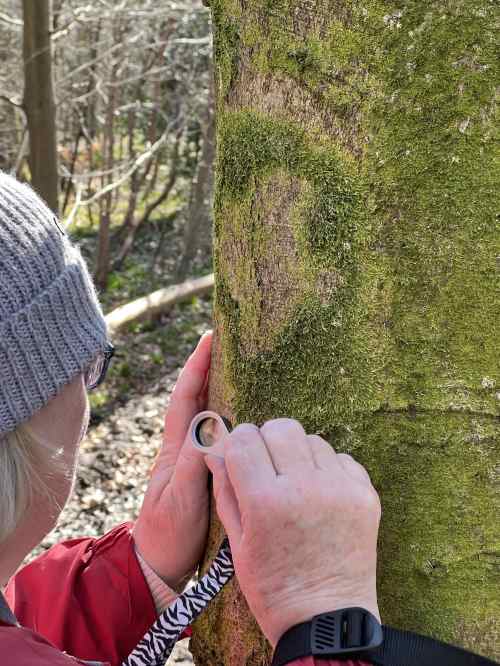
5. Examining Forked Veilwort (Metzgeria furcata) and Whiskered Veilwort (Metzgeria consanguinea) growing side-by-side on a beech tree.
Liverworts included Dilated Scalewort (Frullania dilatata), and Forked, Bluish and Whiskered Veilworts (Metzgeria furcata, M. violacea and M. consanguinea). Lichens included the foliose Parmotrema perlatum and crustose ‘Letter Lichen’ (Graphis scripta). I also pointed out the blackish lens-shaped patches of the microfungus, (Ascodichaena rugosa) growing in beech bark and we had a look at the extraordinary biological architecture of the pore-crust fungus, Antrodia xantha on a piece of decaying wood.
I also pointed out the blackish lens-shaped patches of the microfungus, (Ascodichaena rugosa) growing in beech bark and we had a look at the extraordinary biological architecture of the pore-crust fungus, Antrodia xantha on a piece of decaying wood.
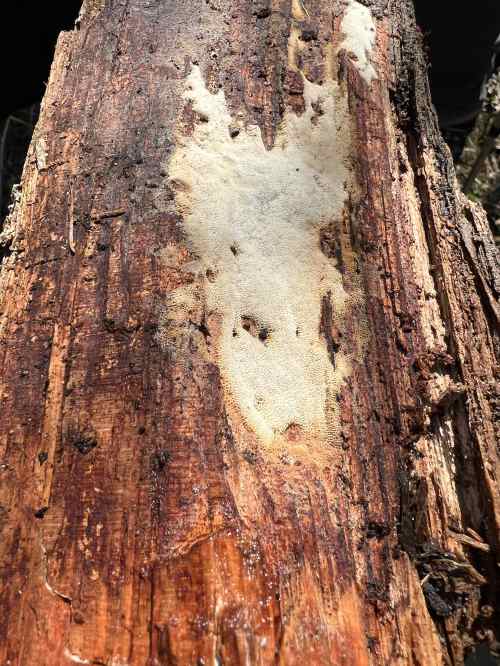
Pore-crust fungus, Antrodia xantha, on decaying wood, macro view © David Hall
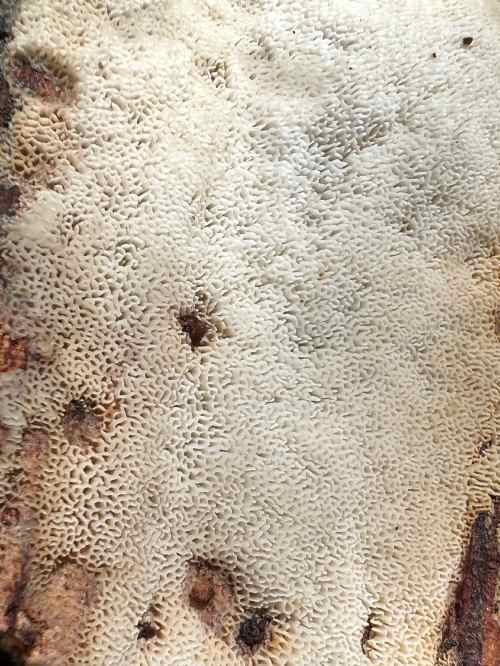
Micro view of the pore-crust fungus, Antrodia xantha, on decaying wood © David Hall
We learned too, how to distinguish between two types of wood decay, brown rot and white rot caused by fungi, as Tom noticed a Marsh Tit and Helena pointed out Lesser Celandines (Ficaria verna). Opposite-leaved Golden-saxifrage (Chrysosplenium oppositifolium) and Wood Anemones (Anemone nemorosa) amongst the early spring flowers.
Passing by where once we had found Scarlet Berry Truffle, onto the downhill path flanked by banks covered by growths of Elegant Silk-moss (Pseudotaxiphyllum elegans), White Earwort (Diplophyllum albicans) and Bank Haircap (Polytrichastrum formosum) we made our way to our lunch spot, accompanied by increasing numbers of Brimstone butterflies.
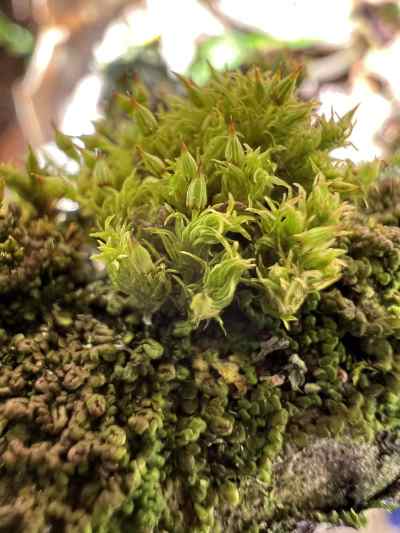
Elegant Bristle-moss, Orthotrichum pulchellum, on a fallen branch © David Hall
Suitably refreshed, we crossed the field, somewhat nervously past docile cattle (both female and a large male!) to view the stream, waterfall and fallen tree-crushed bridge before climbing uphill beside a bank.
Here Helena pointed out Hard Shield-fern (Polystichum aculeatum), Barren Strawberry (Potentilla sterilis) and Townhall Clock (Adoxa moschatelina), and I revived some dried out Rambling Tail-moss (Anomodon viticulosus) with a moisturiser and was pleased to find the delightful Elegant Bristle-moss (Orthotrichum pulchellum) on a fallen branch. Finally we made our way back to our cars accompanied by increasingly loud woodpecker drumbeat.
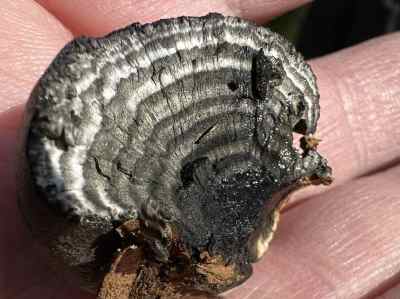
A ‘King Alfred’s Cake’, Daldinia concentrica, cut open to reveal concentric zones of water-storing tissue beneath outer spore-producing (perithecial) zone © David Hall
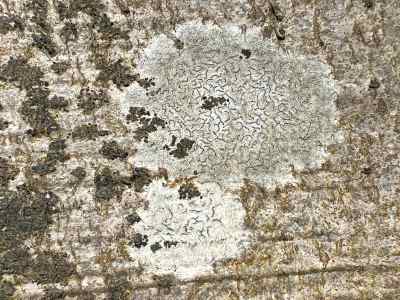
The fungus, Ascodichaena rugosa and ‘Letter Lichen’ (Graphis scripta) on beech bark © David Hall

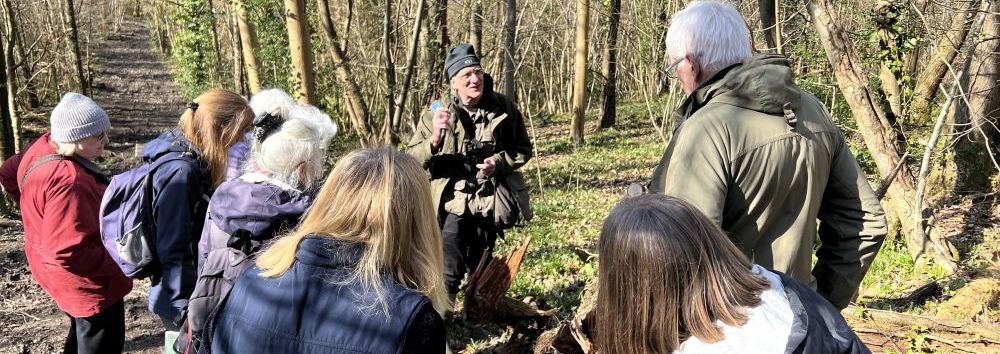
Recent Comments